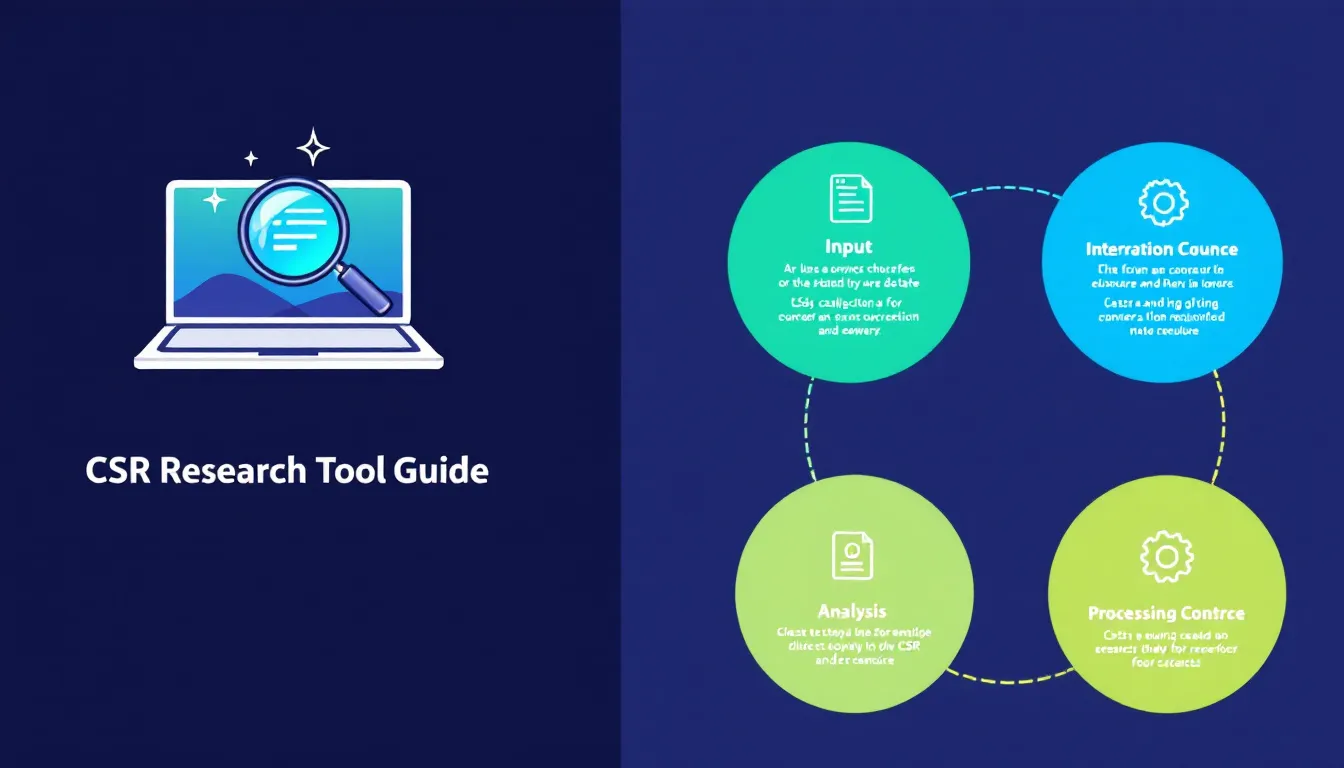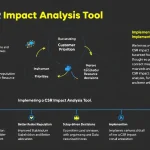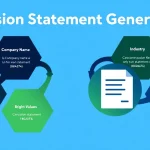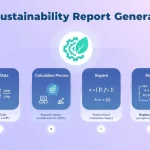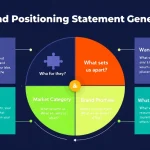Is this tool helpful?
How to Use the Corporate Social Responsibility Research Tool Effectively
This tool helps you analyze competitor CSR initiatives and discover opportunities that align with your organization’s mission and goals. Below is a detailed explanation of each input field along with sample entries you can use to maximize your results.
Step-by-Step Guide to Completing Each Field
- Company Name: Enter your organization’s full official name. Examples:
“GreenTech Innovations” or “Urban Wellness Group”. - Company Values: Provide your core principles and mission statement to help the tool align CSR strategies with your values. Examples:
“Commitment to renewable energy and ethical sourcing.”
“Promoting health and wellness through community outreach.” - Current CSR Initiatives: Describe your ongoing corporate social responsibility programs and community involvement activities. Examples:
“Planting 10,000 trees annually in urban areas.”
“Sponsoring local youth sports and nutrition education.” - Competitors: List your primary competitors whose CSR initiatives you want to analyze. Examples:
“EcoFuture Solutions, Green Horizons LLC”
“Wellness Corp, Healthy Life Inc.” - CSR Focus Areas: Select multiple areas relevant to your CSR efforts to narrow down analysis and identify specific opportunities. Options include Environmental Sustainability, Community Development, Education, Healthcare, and Diversity & Inclusion.
Introduction to the Corporate Social Responsibility Research Tool
This research tool offers a structured approach to evaluate and compare competitor CSR activities while identifying untapped opportunities tailored to your organization’s unique values and goals. It supports data-driven decisions that enhance your community impact and stakeholder engagement.
What This Tool Does
- Competitive Analysis: Compares CSR programs across multiple competitors to reveal strengths and gaps.
- Community Initiative Mapping: Breaks down CSR efforts in key focus areas to spot impactful projects.
- Alignment Assessment: Ensures CSR strategies reflect your mission and core values.
- Geographic Impact Consideration: Analyzes regional CSR efforts for localized relevance.
- Opportunity Identification: Highlights areas with growth potential or differentiation.
Practical Usage of the CSR Research Tool
Use this tool as part of your strategic planning and competitive benchmarking process. Here’s how to integrate it into your workflow:
Steps for Effective Implementation
- Gather Internal Data: Compile your company’s mission, values, and current CSR initiatives before starting.
- Identify Key Competitors: Select organizations to analyze based on market relevance and CSR activity.
- Focus Your CSR Areas: Choose the CSR aspects that best align with your business goals and community needs.
- Submit Data for Analysis: Use the tool to generate a report comparing your CSR position to competitors.
- Review Results: Study the insights to uncover opportunities for new programs or improvements.
- Develop Action Plans: Design initiatives that leverage gaps and align with your company values.
Benefits of Using the Corporate Social Responsibility Research Tool
Strategic Advantages You Gain
- Gain a clear view of competitor CSR landscapes.
- Make informed decisions grounded in market intelligence.
- Allocate resources efficiently to high-impact initiatives.
- Strengthen community relationships and stakeholder trust.
- Enhance your company’s brand through aligned CSR programs.
Operational Benefits to Expect
- Simplify your CSR research and reporting process.
- Organize your data for faster analysis and comparison.
- Understand your competitive position in social responsibility.
- Target development of initiatives that resonate with your audience.
- Create detailed CSR reports for internal and external communication.
Addressing Common Challenges with the Tool
How This Tool Solves Key CSR Planning Problems
- Helps differentiate your CSR initiatives from those of competitors.
- Assists in accurately assessing the needs of your local and broader communities.
- Provides frameworks to measure the impact of your CSR programs effectively.
- Supports optimizing available resources to maximize social return on investment.
- Encourages creating stakeholder value through aligned, meaningful engagement.
Practical Case Studies Demonstrating the Tool’s Use
Technology Company Example
A hardware development firm analyzed competitors focused on tech education, which led to launching a community coding mentorship for girls in STEM fields.
Consumer Goods Brand Example
A household products brand identified gaps in water conservation efforts among its competitors and rolled out an innovative water-saving awareness campaign.
Financial Institution Example
A regional credit union used insights from the tool to create targeted financial literacy workshops aimed at underserved neighborhoods.
Frequently Asked Questions About the Corporate Social Responsibility Research Tool
General Usage
Q: How often should I update my competitor CSR analysis?
A: Quarterly reviews keep your data fresh and help you adapt to emerging trends.
Q: Can I analyze CSR efforts across different countries or regions at once?
A: Yes, you can select multiple geographic focus areas to get a broad yet targeted perspective.
Q: What should I do with the analysis report?
A: Use it to guide CSR strategy, enhance program development, and communicate with stakeholders.
Developing Your CSR Strategy
Q: What makes a CSR initiative truly effective?
A: It must reflect your core values, meet clear community needs, and provide unique benefits compared to competitors’ programs.
Q: How do I ensure strong community involvement?
A: Design sustainable programs with measurable outcomes and involve stakeholders early in planning.
Q: Should CSR activities focus locally or globally?
A: Align your CSR scope with your operational reach and strategic priorities for best results.
Measuring Impact and Value
Q: How do CSR initiatives enhance brand image?
A: Thoughtful CSR programs build trust, loyalty, and positive community relationships over time.
Q: Why involve employees in CSR programs?
A: Employee participation increases program effectiveness and strengthens internal commitment.
Q: What metrics should I track for CSR success?
A: Include community impact data, stakeholder feedback, and progress against strategic objectives.
Advanced Strategies for Implementing CSR Successfully
Aligning CSR with Business Goals
Make sure your CSR initiatives support your overall business vision while differentiating your company through meaningful social contributions.
Engaging Stakeholders Effectively
Develop strategies that include:
- Methods for gathering community input
- Employee involvement programs
- Collaborations with partners and NGOs
- Tools for assessing social impact
- Clear and transparent communication plans
Planning for Long-Term Sustainability
Ensure your CSR efforts last through:
- Careful resource allocation
- Continuous impact measurement and evaluation
- Processes aimed at constant improvement
- Incorporation of stakeholder feedback loops
- Planning for initiative adaptation and evolution
Important Disclaimer
The calculations, results, and content provided by our tools are not guaranteed to be accurate, complete, or reliable. Users are responsible for verifying and interpreting the results. Our content and tools may contain errors, biases, or inconsistencies. Do not enter personal data, sensitive information, or personally identifiable information in our web forms or tools. Such data entry violates our terms of service and may result in unauthorized disclosure to third parties. We reserve the right to save inputs and outputs from our tools for the purposes of error debugging, bias identification, and performance improvement. External companies providing AI models used in our tools may also save and process data in accordance with their own policies. By using our tools, you consent to this data collection and processing. We reserve the right to limit the usage of our tools based on current usability factors.
